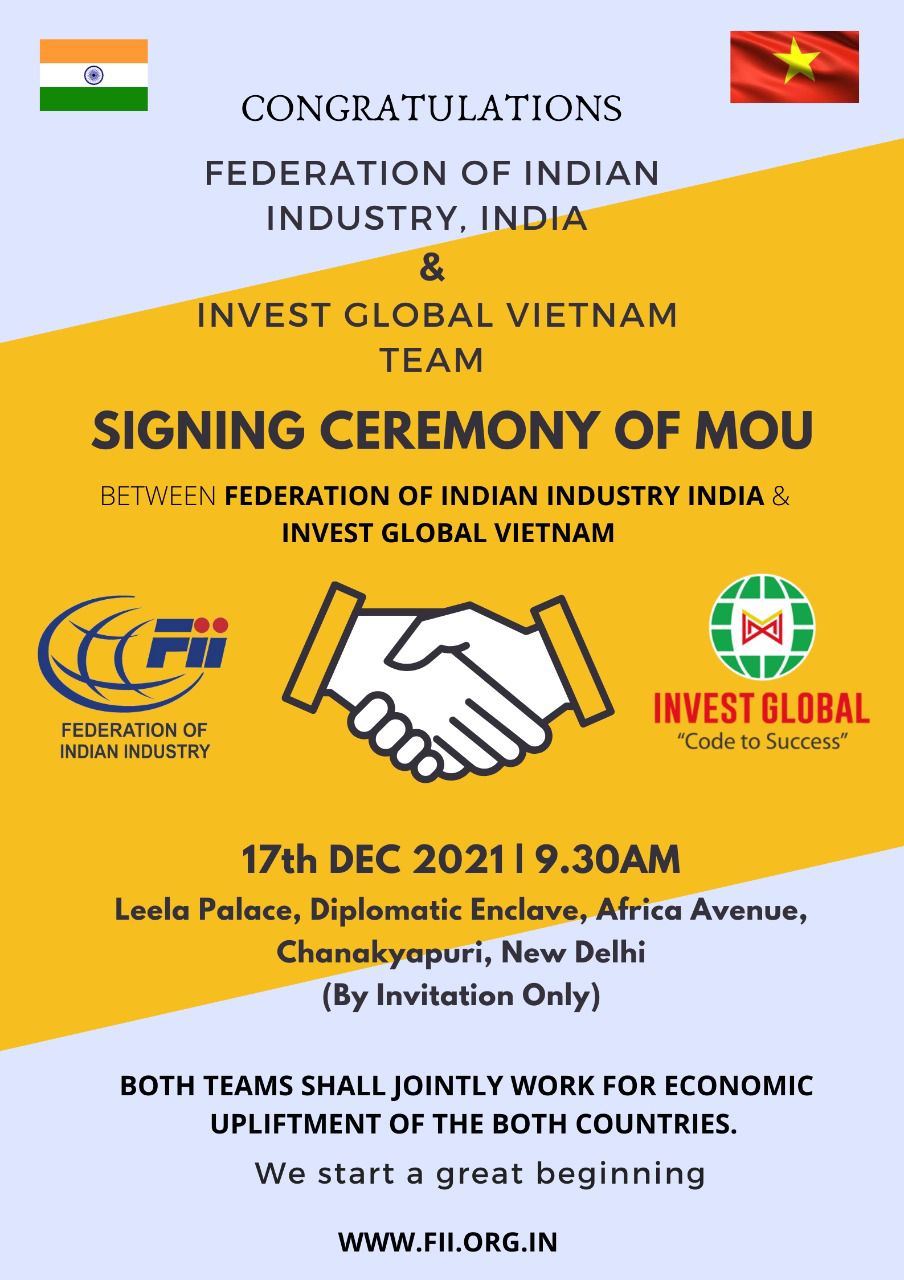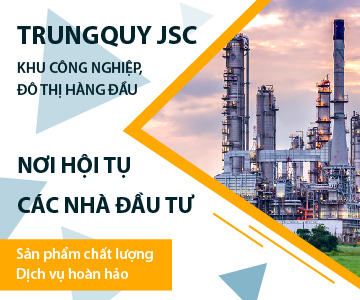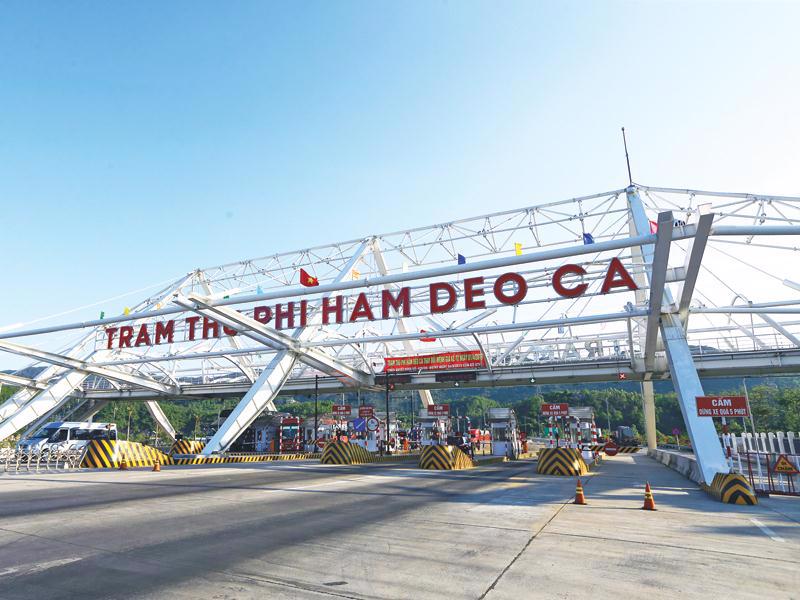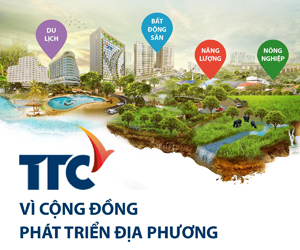INTERNATIONAL INVESTMENT
AND PORTAL
Economically, the EVFTA has been a remarkable catalyst. Vietnam is now the EU's largest trading partner in ASEAN and its 16th largest globally. In the first quarter of 2025, the EU even surpassed China to become Vietnam's second-largest export market, purchasing nearly $14 billion in goods. Since the EVFTA entered force, two-way trade has exceeded $300 billion, with EuroCham's latest Business Confidence Index showing that 21 per cent of members directly benefit from the agreement.
 Erick Contreras, vice-chair of EuroCham Vietnam. Photo: EuroCham Vietnam
Erick Contreras, vice-chair of EuroCham Vietnam. Photo: EuroCham Vietnam
But the partnership goes far beyond trade flows. Through the Global Gateway and the Just Energy Transition Partnership (JETP), Europe is helping Vietnam identify and finance more than 24 green projects worth roughly $7 billion, from hydropower modernisation to transmission facilities upgrades. These are not simply infrastructure projects; they are investments in shared prosperity and sustainability.
Europe is recognised as a pioneer in green transformation. What lessons can Vietnam draw from the EU's experience?Europe's green transition has been decades in the making, and this journey offers several key lessons. The first is policy predictability. Investors need long-term confidence, and Europe achieved that through consistent frameworks such as the European Green Deal and Clean Industrial Deal.
The second is innovation ecosystems. Europe builds its transition around collaboration, connecting researchers, startups, and industries to co-develop technologies in areas like offshore wind, hydrogen, and circular economy solutions.
The third is inclusivity. A green transition cannot succeed without people. Not just large corporations are spearheading green projects, but small- and medium-sized enterprises (SMEs) and local communities are also part of the process, creating jobs and public support.
Vietnam already has strong foundations, with a clear national green growth strategy, expanding renewable capacity, and strong foreign investor confidence. The next step is to move from pilot projects to national implementation and make green transformation a driver of economic competitiveness.
How do you see Vietnam's path forward in funding its green transition?The green transition requires immense capital. Vietnam will need tens of billions of dollars each year to decarbonise its power, transport, and manufacturing sectors.
The good news is that we already have models to address this need. The solution lies in blended finance, combining public funding, development assistance, and private investment. Europe, through mechanisms such as JETP, can play a crucial role not only in providing capital but also in structuring bankable projects that attract global investors.
 Photo: EuroCham Vietnam
Photo: EuroCham Vietnam
We must also think creatively: green bonds, offtake-based financing, and infrastructure funds can mobilise capital more efficiently. These models will be discussed extensively at our Green Economy Forum (GEF) 2025, which aims to connect retainers, financiers, and innovators to move from commitments to implementation, which can help Vietnam channel global capital into tangible and bankable opportunities.
But funding alone is not enough. Readiness and awareness must keep pace with opportunity, and that is where we see a gap emerging.
Could you elaborate on that gap? What are you seeing from European businesses and local partners on the ground?Sustainability is becoming a business differentiator. Companies that adapt to green standards gain better access to capital and international markets.
For example, aligning with European green standards, whether through carbon disclosure, ESG reporting, or traceability – opens the door to green financing and sustainable trade with the EU. That is the logic behind regulations like the EU Deforestation Regulation.
Our latest EuroCham Business Confidence Index for Q3 2025 reveals something striking.
About 50 per cent of respondents are not yet aware of or do not see EU sustainability initiatives – such as JETP, CBAM, EUDR – as relevant to their operations. Around 24 per cent are aware but not yet engaged, and 12 per cent are exploring their options. Only 11 per cent are actively implementing green compliance and seeing tangible benefits.
This shows that the opportunities are there, but the understanding and readiness to capitalise on them are still uneven. Awareness is improving, especially among exporters and manufacturers, but many remain unsure of how to start.
That is exactly where EuroCham and our sector committees play a role: raising awareness, building capacity, and connecting businesses with European partners who can share technology and expertise.
If Vietnamese firms can align with European green standards, they open the door to new markets, investments, and financing tools designed for sustainable growth.
The scale of this transformation is immense. How can public–private cooperation ensure the green transition is both achievable and inclusive?Asia-Pacific accounts for nearly half of global greenhouse-gas emissions yet remains highly reliant on fossil fuels. Based on current trajectories, most countries are not on track to meet their 2030 climate targets, and the emissions gap may widen further by 2040.
No single government or business can deliver the green transition alone. It requires a coalition of partners – public, private, and community – each contributing what they do best.
 EuroCham's Green Business Awards. Photo: EuroCham Vietnam
EuroCham's Green Business Awards. Photo: EuroCham Vietnam
Governments must provide clear regulatory frameworks and incentives; the private sector must deliver innovation, capital, and speed; and communities must be engaged to ensure support, inclusion, and resilience.
Public–private partnerships are essential to building sustainable infrastructure and de-risk large-scale investments. EuroCham's role is to serve as a bridge – connecting European expertise and finance with Vietnam's development goals.
Through our continuous advocacy efforts like EuroCham's WhiteBook and platforms like the GEF, we facilitate continuous dialogue with ministries and stakeholders to co-create actionable roadmaps for a just and inclusive transition.
What makes GEF unique is its focus on outcomes. It is not a ceremonial event – it is a working platform for new partnerships and investment pipelines. It is where ideas translate into projects and where dialogue builds the confidence investors need to make decisions. I often say Vietnam does not lack ambition – it needs accelerated action. And that is what GEF is designed to do. And we invite everyone – businesses, investors, and innovators – to join us in shaping that future together.
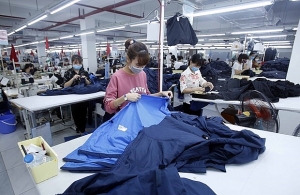 EVFTA offers new prospects to European economies
EVFTA offers new prospects to European economies
The EU–Vietnam Free Trade Agreement (EVFTA), which came into effect on August 1, not only opens up opportunities to spur Vietnam's economy but also offers new prospects to the European economy at a time of global financial uncertainties, according to the German press agency DPA.
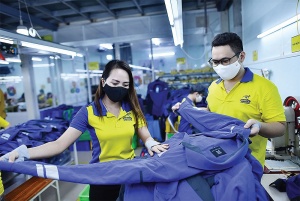 Maximizing the benefits of EVFTA
Maximizing the benefits of EVFTA
Entered into force in the context of the bilateral development of relations, the EU–Vietnam Free Trade Agreement has brought both positive impacts in many fields. Peter Bernhardt, Dr. Eduardo Austin and Prof. Dr. Konstantinos Athanasiadis of the ARISE+ Vietnam Project explains how Vietnam can face up to the challenges that the country's private and public sectors need to address in the years to come.
 Greater EU investment flow expected
Greater EU investment flow expected
After the challenges in their commercial operations, European businesses in Vietnam are recovering and rebounding. Alain Cany, chairman of the European Chamber of Commerce in Vietnam, talked to VIR's Bich Thuy about the prospects and trends of the EU-Vietnam Free Trade Agreement that bolsters trade interaction with both sides.
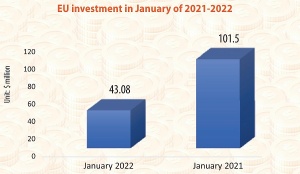 High-tech EU investment shows promise
High-tech EU investment shows promise
Driven by the Vietnamese government's new strong moves, greater investment flows from the EU into Vietnam is on the horizon for 2022, focusing on high-tech industries as well as green and sustainable business, expecting to change the country's foreign investment picture in the months to come.
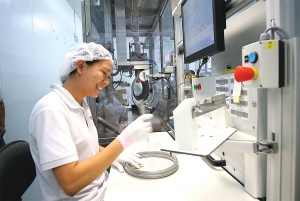 Optimism rises for stellar EU investment across Vietnam
Optimism rises for stellar EU investment across Vietnam
The future of EU investment in Vietnam looks promising, with many opportunities in digitalisation, renewable energy, and sustainable development.









